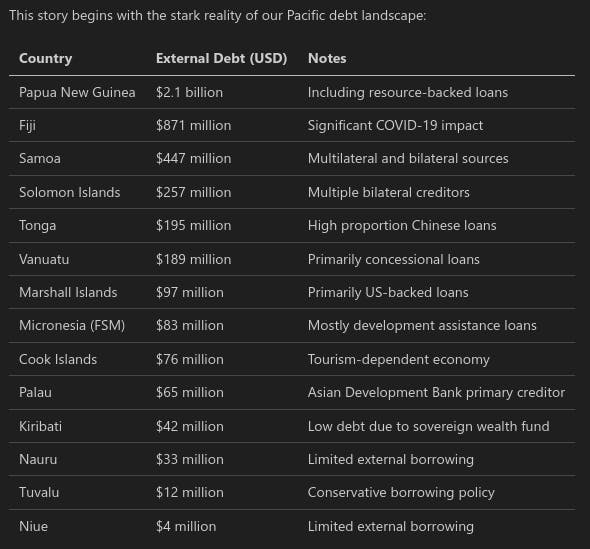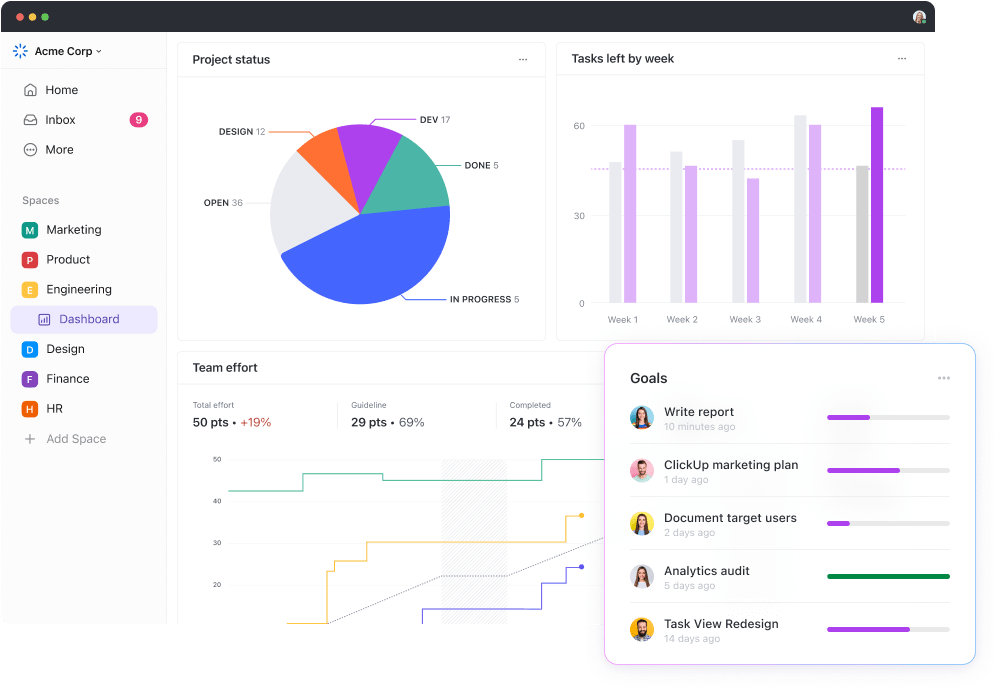In the vast expanse of the Pacific Ocean, scattered island nations navigate not just their waters, but a complex web of financial commitments. Picture this, a small island nation, blessed with stunning beaches and rich cultural heritage, yet grappling with millions in national debt. Now, imagine that same nation being required to contribute a portion of it’s tax payers national income annually to regional organizations, money that could potentially fix a local school or upgrade a community clinic.
Yet, amidst these financial struggles, our Pacific nations continue to support regional organizations through significant annual contributions:
Walking through the corridors of power in any Pacific capital, you’ll hear whispers of frustration. Take Tonga, for instance, while wrestling with external debt of $195 million or 35.9% of its GDP, with two-thirds of this debt owed to China’s Export-Import Bank, they’re still expected to contribute annually to each regional organization. It’s like asking someone struggling with their mortgage to keep paying country club membership fees.
The question echoing across the region isn’t whether regional cooperation matters, it does. The real question is whether the current model serves our people’s interests. Are we maintaining expensive regional bureaucracies at the cost of local development? While regional leaders meet in air-conditioned conference rooms, local schools might be running short on basic supplies.
The United States President Donald Trump’s approach to international organizations, though controversial, raised valid questions about return on investment. Perhaps it’s time for Pacific nations to adopt a similar scrutiny. What tangible benefits do these regional organizations deliver to the average Pacific Islander? Could these funds be better spent addressing pressing local needs?
Imagine if Tonga, with its $195 million debt burden, redirected its regional contributions to domestic infrastructure. Or if Solomon Islands, managing $257 million in external debt, invested those funds in local education initiatives instead. The possibilities for local impact are significant.
Consider the pressing need for justice system reform across the Pacific. While millions flow into regional climate change initiatives, an issue where individual Pacific nations have limited direct influence, our local justice systems continue to prioritize punishment over rehabilitation. Many Pacific nations struggle with overcrowded prisons, limited rehabilitation programs, and high recidivism rates.
The funds currently directed toward regional bureaucracies could instead support evidence-based rehabilitation programs, vocational training for inmates, and community reintegration services. For instance, the annual contribution to just one regional organization could fund comprehensive rehabilitation programs in multiple correctional facilities, helping break the cycle of re-offending and transforming lives within our communities.
A reformed justice system could become a cornerstone of sustainable development in the Pacific. By investing in rehabilitation rather than mere incarceration, we could address root causes of social issues that plague our communities. Traditional Pacific wisdom emphasizes restoration and healing, principles largely absent from our current justice systems.
Imagine correctional facilities that incorporate cultural practices, offer mental health support, and provide practical skills training. The cost of implementing such programs across a nation like Fiji or Samoa would roughly equal their annual contributions to regional organizations. This isn’t just about reducing crime, it’s about rebuilding lives and strengthening the fabric of our Pacific societies.
Rather than channeling resources into distant regional climate initiatives where our influence is minimal, we could invest in our own people, particularly those caught in a justice system that often creates more problems than it solves. This isn’t just about saving money, it’s about redirecting our resources to where they can make the most immediate and tangible impact on Pacific lives.
The Pacific way has always been about community, about working together. But like any community relationship, it needs to be sustainable and mutually beneficial. As Pacific Islanders face mounting challenges from within and without, it’s important to economic development, perhaps it’s time to ask: Is our current regional architecture helping us swim, or is it weighing us down?
In the end, this isn’t just about numbers on a spreadsheet, it’s about the future of Pacific peoples. It’s about ensuring that every dollar spent serves the best interests of our communities. As the sun sets over another Pacific day, the question remains: Is it time to chart a new course in our regional journey?
The financial data presented in this analysis represents approximate figures that should be independently verified through current official sources. These figures are dynamic and subject to change due to various factors including new loan agreements, repayment schedules, and exchange rate fluctuations. While every effort has been made to ensure accuracy, readers should consult official government sources, international financial institutions, and recent economic reports for the most current and comprehensive financial data. The analysis provided serves as a starting point for further discussion rather than definitive financial statements.










